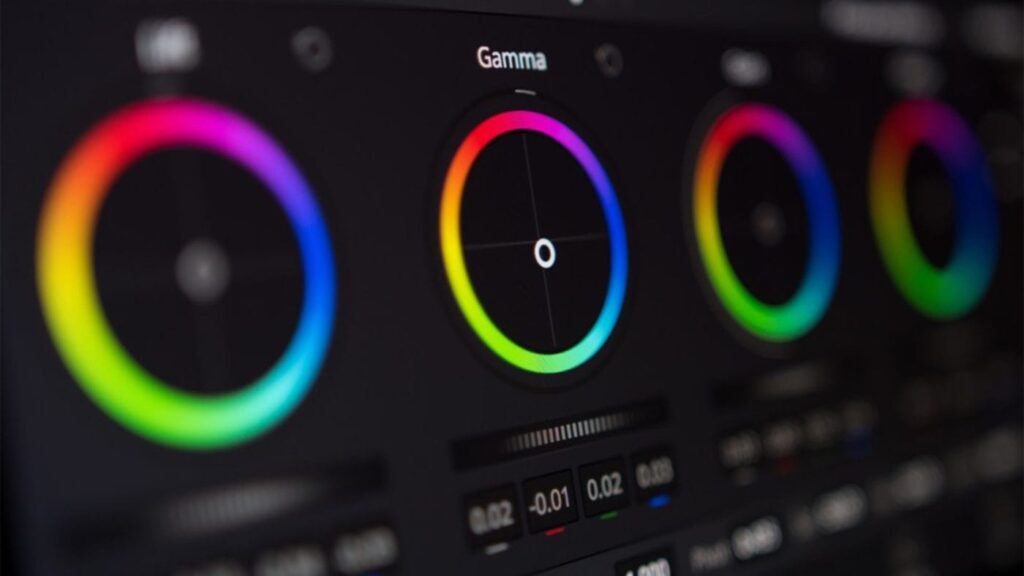In this article, we explore the indispensable role of color grading in the filmmaking process and how it transforms raw footage into a visually compelling masterpiece.
1. Setting the Mood and Tone
Color has the power to evoke emotions and set the mood for a film. Whether it’s the warm, nostalgic tones of a coming-of-age story or the cool, desaturated palette of a thriller, color grading plays a pivotal role in conveying the intended atmosphere and tone. Filmmakers use color to immerse the audience in the emotional landscape of the narrative.
2. Enhancing Storytelling
Color grading is a visual storytelling tool that enhances the narrative by guiding the viewer’s emotional journey. Subtle shifts in color can signify transitions between time periods, changes in character dynamics, or shifts in the story’s emotional arc. The intentional use of color helps communicate themes and motifs without relying on explicit dialogue.
3. Creating Visual Consistency
In film production, scenes are often shot on different days, under varying lighting conditions. Color grading acts as a unifying force, ensuring visual consistency across scenes. By balancing color tones and correcting discrepancies, color grading helps create a seamless flow, preventing distractions and maintaining a cohesive visual aesthetic.
4. Fostering Genre-specific Styles
Different genres demand distinct visual styles. From the vibrant and saturated colors of a fantasy epic to the muted and high-contrast look of a film noir, color grading allows filmmakers to embrace and enhance genre-specific aesthetics. It enables the creation of visual signatures that resonate with the audience’s expectations for a particular genre.
5. Directing Focus and Attention
Strategic color grading can guide the viewer’s attention to specific elements within the frame. By manipulating contrast and brightness, filmmakers can emphasize or de-emphasize certain details. This helps direct the audience’s focus, ensuring that critical story elements are highlighted while background elements fade into the periphery.
6. Conveying Time and Place
Color grading serves as a temporal and spatial marker, communicating the setting and era of a film. A sepia-toned palette might evoke a historical period, while futuristic films often embrace sleek, high-contrast colors. Through color, filmmakers transport audiences across time and space, enriching the storytelling experience.
7. Exploring Symbolism and Metaphor:
Colors often carry symbolic meanings, and filmmakers leverage this symbolism to add layers of depth to their narratives. For example, the use of red might signify danger or passion, while blue may evoke tranquility or melancholy. Color grading allows filmmakers to infuse their work with subtle symbolism and metaphorical resonance.
8. Crafting Cinematic Looks
Filmmakers often aspire to achieve distinct and cinematic looks that define their visual style. Color grading enables the crafting of these signature looks, whether it’s the warm, golden hues of a sun-drenched romance or the cold, muted tones of a dystopian future. Cinematic looks contribute to the film’s visual identity and leave a lasting impression on the audience.
9. Embracing Creative Expression
Color grading is a playground for creative expression, giving filmmakers the freedom to experiment with different palettes and styles. The process allows for artistic interpretation, enabling directors and cinematographers to realize their unique visions and bring a subjective, emotional quality to the visual storytelling.
10. Meeting Technical Standards
Beyond aesthetics, color grading ensures that a film meets technical standards for broadcast or distribution. It involves color correction to achieve a balanced and accurate representation of the images captured during filming. This technical aspect is fundamental to delivering a professional and visually polished final product.
Conclusion
In the realm of filmmaking, color grading is the silent maestro that orchestrates the visual symphony, shaping emotions, enhancing storytelling, and providing a signature aesthetic to each frame.
As filmmakers harness the power of color to set moods, convey themes, and create cinematic identities, color grading emerges as an essential and transformative stage in the post-production journey.
It is the final brushstroke that completes the cinematic canvas, ensuring that every frame resonates with the intended emotion and captivates the audience in a visual journey that transcends the screen.


